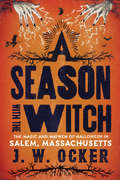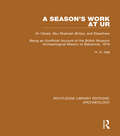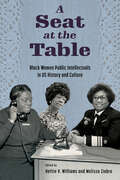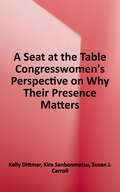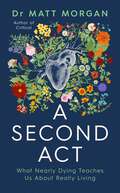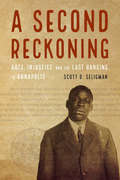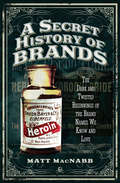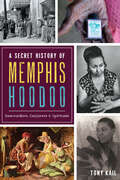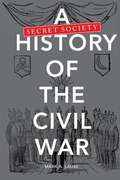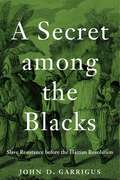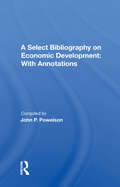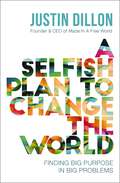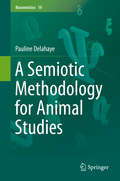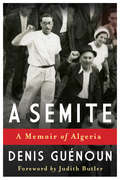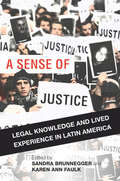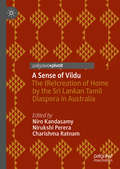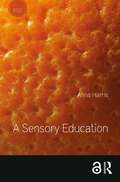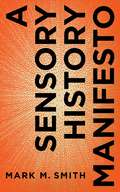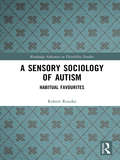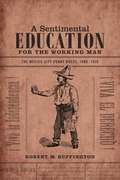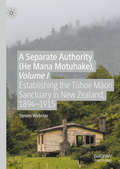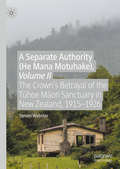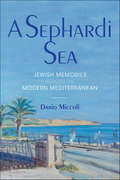- Table View
- List View
A Season with the Witch
by J. W. OckerSalem, Massachusetts, may be the strangest city on the planet. A single event in its 400 years of history--the Salem Witch Trials of 1692--transformed it into the Capital of Creepy in America. But Salem is a seasonal town--and its season happens to be Halloween. Every October, this small city of 40,000 swells to close to half a million as witches, goblins, ghouls, and ghosts (and their admirers) descend on Essex Street. For the fall of 2015, occult enthusiast and Edgar Award-winning writer J. W. Ocker moved his family of four to downtown Salem to experience firsthand a season with the witch, visiting all of its historical sites and macabre attractions. In between, he interviews its leaders and citizens, its entrepreneurs and visitors, its street performers and Wiccans, its psychics and critics, creating a picture of this unique place and the people who revel in, or merely weather, its witchiness.
A Season's Work at Ur, Al-'Ubaid, Abu Shahrain-Eridu-and Elsewhere: Being an Unofficial Account of the British Museum Archaeological Mission to Babylonia, 1919 (Routledge Library Editions: Archaeology)
by H.R. HallThis classic work from 1930 describes the archaeological mission to Iraq which was a huge leap in the understanding of Mesopotamian history. It chronicles the journey, the excavations and the findings in a personalised account, heavily illustrated with maps, photographs of the locations and the findings, offering great insight into a special investigation of its time.
A Seat at the Table: Black Women Public Intellectuals in US History and Culture
by Hettie V. Williams and Melissa ZiobroContributions by Omar H. Ali, Simone R. Barrett, Tejai Beulah, Sandra Bolzenius, Carol Fowler, Lacey P. Hunter, Tiera C. Moore, Tedi A. Pascarella, John Portlock, Lauren T. Rorie, Tanya L. Roth, Marissa Jackson Sow, Virginia L. Summey, Hettie V. Williams, and Melissa ZiobroWhile Black women’s intellectual history continues to grow as an important subfield in historical studies, there remains a gap in scholarship devoted to the topic. To date, major volumes on American intellectual history tend to exclude the words, ideas, and contributions of these influential individuals. A Seat at the Table: Black Women Public Intellectuals in US History and Culture seeks to fill this void, presenting essays on African American women within the larger context of American intellectual history. Divided into four parts, the volume considers women in politics, art, government, journalism, media, education, and the military. Essays feature prominent figures such as Shirley Chisholm, Oprah Winfrey, journalist Charlotta Bass, and anti-abortion activist Mildred Fay Jefferson, as well as lesser-known individuals.The anthology begins with a discussion of the founders in Black women’s public intellectualism, providing a framework for understanding the elements, structure, and concerns central to their lives and work in the nineteenth century. The second section focuses on leaders in the Black Christian intellectual tradition, the civil rights era, and modern politics. Part three examines Black women in society and culture in the twentieth century, with essays on such topics as artists in the New Negro era; Joycelyn Elders, a public servant and former surgeon general; and America’s foremost Black woman influencer, Oprah. Lastly, part four concerns Black women and their ideas about public service—particularly military service—with essays on service members during World War II and the post-WWII military. Taken as a whole, A Seat at the Table is an important anthology that helps to establish the validity and existence of heretofore neglected intellectual traditions in the public square.
A Seat at the Table: Congresswomen's Perspectives on Why Their Presence Matters
by Kira Sanbonmatsu Susan J. Carroll Kelly DittmarThe presence of women in Congress is at an all-time high—approximately one of every five members is female—and record numbers of women are running for public office for the 2018 midterms. At the same time, Congress is more polarized than ever, and little research exists on how women inCongress view their experiences and contributions to American politics today. <p><p>Drawing on personal interviews with over three-quarters of the women serving in the 114th Congress, the authors analyze how these women navigate today's stark partisan divisions, and whether they feel effective in their jobs. Unlike other studies of women in Congress, this book avoids looking at gender in a vacuum, instead considering how gender interacts with political party, race and ethnicity, seniority, chamber, and district characteristics to shape women's representational influence and behavior. <p><P>Through first-person perspectives, A Seat at the Table looks at what motivates these women's legislative priorities and behavior, details the ways in which women experience service within a male-dominated institution, and highlights why it matters that women sit in the nation's federal legislative chambers. It describes the strategies women employ to "slog through" any challenges they confront as well as the opportunities available to them. Importantly, the book looks at the myriad ways in which different women's representation matters, beyond gender dichotomies and "women's issues"—finding that two of the most complicating factors to a singular narrative of women's congressional representation are party and race and ethnicity. While their perspectives, experiences, and influence are neither uniform nor interchangeable, congresswomen believe their presence matters in myriad ways, affecting congressional culture, priorities, processes, debates, and outcomes.
A Second Act: What Nearly Dying Teaches Us About Really Living
by Dr Matt MorganI&’ve worked as a doctor for over twenty years, caring for patients who are in the thick fog between life and death. I&’ve met hundreds of people who have died, were resuscitated and lived. I&’ve long thought that these are the people that we should be listening to, not influencers or business gurus. They know what really matters. Dr Matt Morgan has met hundreds of people who&’ve come back from the dead. Their hearts stopped, their bodies unresponsive, rescued from the brink of death by the modern intensive care techniques he specialises in. People like Ed, who was walking through a park when there was a bang, a bright light and then nothing. Ed had been hit by a bolt of lightning – 300 million volts, enough to power a city for a day, coursed through his body, short-circuiting his heart. Ed was given life-saving CPR and he survived. He lives a little differently now, every day knowing the thin margins that separate life and death. In A Second Act, Morgan introduces us to patients who&’ve experienced hypothermia, overdoses, heart attacks and transplants to see how their lives have been transformed by the second chance they&’ve been given. He shares the lessons they&’ve learned, along with his own realisations about life and how to make the most of it. Life shouldn&’t be wasted on the living.
A Second Reckoning: Race, Injustice, and the Last Hanging in Annapolis
by Scott D. SeligmanA Second Reckoning tells the story of John Snowden, a Black man accused of the murder of a pregnant white woman in Annapolis, Maryland, in 1917. He refused to confess despite undergoing torture, was tried—through legal shenanigans—by an all-white jury, and was found guilty on circumstantial evidence and sentenced to death. Despite hair-raising, last-minute appeals to spare his life, Snowden was hanged for the crime. But decades after his death, thanks to tireless efforts by interested citizens and family members who believed him a victim of a &“legal lynching,&” Snowden was pardoned posthumously by the governor of Maryland in 2001.A Second Reckoning uses Snowden&’s case to bring posthumous pardons into the national conversation about amends for past racial injustices. Scott D. Seligman argues that the repeal of racist laws and policies must be augmented by reckoning with America&’s judicial past, especially in cases in which prejudice may have tainted procedures or perverted verdicts, evidence of bias survives, and a constituency exists for a second look. Seligman illustrates the profound effects such acts of clemency have on the living and ends with a siren call for a reexamination of such cases on the national level by the Department of Justice, which officially refuses to consider them.
A Secret History of Brands: The Dark and Twisted Beginnings of the Brand Names We Know and Love
by Matt MacNabbThe true—and often shocking—stories behind some of the biggest names in business. We live our lives immersed in name brand products. What most of us don't know is that the origins of many of the most well-known and beloved brands in the world are shrouded in controversy, drug use, and sometimes even blatant racism.A Secret History of Brands cuts through the rumors and urban legends and paints a picture of the true dark history of famous brands, like Coca-Cola, Hugo Boss, Adidas, Ford, Bayer, Chanel, and BMW, among others. Learn about: the mystery of the cocaine content of Coca-Colathe Hitler-Henry Ford connectionwhy Bayer is famous for aspirin, but began their journey with Heroinhow Kellogg's Corn Flakes were crafted to deter sexual arousaland more
A Secret History of Memphis Hoodoo: Rootworkers, Conjurers, & Spirituals (American Heritage Ser.)
by Tony Kail&“Reveals the stories and legends of conjurers and healers from the arrival of African slaves on Memphis plantations to blues musicians on Beale Street.&” —Preston Lauterbach, author of Beale Street Dynasty Widely known for its musical influence, Beale Street was also once a hub for Hoodoo culture. Many blues icons, such as Big Memphis Ma Rainey and Sonny Boy Williamson, dabbled in the mysterious tradition. Its popularity in some African American communities over the past two centuries fueled racial tension—practitioners faced social stigma and blame for anything from natural disasters to violent crimes. However, necessity sometimes outweighed prejudice, and even those with the highest social status turned to Hoodoo for prosperity, love, or retribution. In this book, Tony Kail traces Memphis's colorful Hoodoo heritage from the arrival of Africans in Shelby County to the growth of conjure culture in juke joints and Spiritual Churches.Includes photographs
A Secret Society History of the Civil War
by Mark A. LauseThis unique history of the Civil War considers the impact of nineteenth-century American secret societies on the path to as well as the course of the war. Beginning with the European secret societies that laid the groundwork for freemasonry in the United States, Mark A. Lause analyzes how the Old World's traditions influenced various underground groups and movements in America, particularly George Lippard's Brotherhood of the Union, an American attempt to replicate the political secret societies that influenced the European Revolutions of 1848. Lause traces the Brotherhood's various manifestations, including the Knights of the Golden Circle (out of which developed the Ku Klux Klan), and the Confederate secret groups through which John Wilkes Booth and others attempted to undermine the Union. This book shows how, in the years leading up to the Civil War, these clandestine organizations exacerbated existing sectional tensions and may have played a part in key events such as John Brown's raid on Harpers Ferry, Lincoln's election, and the Southern secession process of 1860-1861.
A Secret among the Blacks: Slave Resistance before the Haitian Revolution
by John D. GarrigusA bold rethinking of the Haitian Revolution reveals the roots of the only successful slave uprising in the modern world.Unearthing the progenitors of the Haitian Revolution has been a historical project of two hundred years. In A Secret among the Blacks, John D. Garrigus introduces two dozen Black men and women and their communities whose decades of resistance to deadly environmental and political threats preceded and shaped the 1791 revolt.In the twenty-five miles surrounding the revolt’s first fires, enslaved people of diverse origins lived in a crucible of forces that arose from the French colonial project. When a combination of drought, trade blockade, and deadly anthrax bacteria caused waves of death among the enslaved in the 1750s, poison investigations spiraled across plantations. Planters accused, tortured, and killed enslaved healers, survivors, and community leaders for deaths the French regime had caused. Facing inquisition, exploitation, starvation, and disease, enslaved people devised resistance strategies that they practiced for decades. Enslaved men and women organized labor stoppages and allied with free Blacks to force the French into negotiations. They sought enforcement of freedom promises and legal protection from abuse. Some killed their abusers.Through remarkable archival discoveries and creative interpretations of the worlds endured by the enslaved, A Secret among the Blacks reveals the range of complex, long-term political visions pursued by enslaved people who organized across plantations located in the seedbed of the Haitian Revolution. When the call to rebellion came, these men and women were prepared to answer.
A Select Bibliography On Economic Development: With Annotations
by John P. PowelsonThis bibliography of more than 2,000 titles contains both books and journal articles, primarily those published since 1970. Most of the entries are annotated. The material is classified according to forty-eight categories, and there is also a list of relevant titles for each major country in Africa, Asia, and Latin America.
A Selfish Plan to Change the World: Finding Big Purpose in Big Problems
by Justin DillonYou are exactly what the world needs What if your search for meaning could solve the world’s problems? What if everything you are passionate about could save a life or change history? Justin Dillon argues it can, and A Selfish Plan to Change the World shows how. In this paradigm-shifting new book, Dillon--the founder of Slavery Footprint and Made in a Free World--reveals the secret to a life of deep and lasting significance: the discovery that our need for meaning is inextricably linked to the needs of the world. A Selfish Plan to Change the World delivers a revolutionary method for meeting both needs. Drawing upon his own unlikely transformation from touring musician to founder of a global movement and telling the stories of other surprising world-changers, Dillon shows how to create a life of deep purpose by stepping into the problems of the world. Taking readers on a journey from sweatshops in India to punk rock concerts in Ireland, Dillon exposes the limitations of the "giving back" approach involving donations and volunteerism to reveal the unexpected power of "giving in" to pursue self-interest in a way that alters the very dynamics of the world’s most challenging problems. A Selfish Plan to Change the World is your "self-help-others" guide to a life that matters, demonstrating how you can repurpose your existing talents, backstory, and networks to improve the lives of others. Changing the world no longer belongs only to martyrs and professional do-gooders. You can live an extraordinary life. You can change the world. All you ever needed was a plan.
A Semiotic Methodology for Animal Studies (Biosemiotics #19)
by Pauline DelahayeThis monograph is about new perspective in animal studies methodology, by using concepts and tools from the field of semiotics. It proposes a reflexion on current challenges and issues in the ethology field, and introduces different semiotics – biosemiotics, zoosemiotics – as potential methodological solutions. The chapters cover many aspects of ethology where semiotics can be a helpful hand: studies of language, culture, cognition or emotions, issues about complex, endangered or variable species. It explains why these points are difficult to study for actual ethology, why they still matter for researchers, biodiversity actors or wildlife programs, and how an interdisciplinary study with a semiotic point of view can help understand them. This book will appeal to a wide readership, from researchers and academics in living sciences as well as in linguistics fields, to other professionals – veterinarian, wildlife managers, zookeepers, and many others – who feel the need to better understand some aspects of animals they are working with. Students with animal focus should read this book as an introduction to interdisciplinary methodology, and a proposition to work differently with animals.
A Semite: A Memoir of Algeria
by Denis GuenounIn this vivid memoir, Denis Guénoun excavates his family's past and progressively fills out a portrait of an imposing, enigmatic father. René Guénoun was a teacher and a pioneer, and his secret support for Algerian independence was just one of the many things he did not discuss with his teenaged son. To be Algerian, pro-independence, a French citizen, a Jew, and a Communist were not, to René's mind, dissonant allegiances. He believed Jews and Arabs were bound by an authentic fraternity and could only realize a free future together. René Guénoun called himself a Semite, a word that he felt united Jewish and Arab worlds and best reflected a shared origin. He also believed that Algerians had the same political rights as Frenchmen. Although his Jewish family was rooted in Algeria, he inherited French citizenship and revered the principles of the French Revolution. He taught science in a French lycée in Oran and belonged to the French Communist Party. His steadfast belief in liberty, equality, and fraternity led him into trouble, including prison and exile, yet his failures as an activist never shook his faith in a rational, generous future.René Guénoun was drafted to defend Vichy France's colonies in the Middle East during World War II. At the same time, Vichy barred him and his wife from teaching because they were Jewish. When the British conquered Syria, he was sent home to Oran, and in 1943, after the Allies captured Algeria, he joined the Free French Army and fought in Europe. After the war, both parents did their best to reconcile militant unionism and clandestine party activity with the demands of work and family. The Guénouns had little interest in Israel and considered themselves at home in Algeria; yet because he supported Algerian independence, René Guénoun outraged his French neighbors and was expelled from Algeria by the French paramilitary Organisation Armée Secrète. He spent his final years in Marseille. Gracefully weaving together youthful memories with research into his father's life and times, Denis Guénoun re-creates an Algerian past that proved lovely, intellectually provocative, and dangerous.
A Sense of Justice: Legal Knowledge and Lived Experience in Latin America
by Karen Faulk Sandra BrunneggerThroughout Latin America, the idea of "justice" serves as the ultimate goal and rationale for a wide variety of actions and causes. In the Chilean Atacama Desert, residents have undertaken a prolonged struggle for their right to groundwater. Family members of bombing victims in Buenos Aires demand that the state provide justice for the attack. In Colombia, some victims of political violence have turned to the courts for resolution, while others reject the state's ability to fairly adjudicate their grievances and have constructed a non-state tribunal. In each of these examples, the protagonists seek one main thing: justice. A Sense of Justice ethnographically explores the complex dynamics of justice production across Latin America. The chapters examine (in)justice as it is lived and imagined today and what it means for those who claim and regulate its parameters, including the Brazilian police force, the Permanent Peoples' Tribunal in Colombia, and the Argentine Supreme Court. Inextricable as "justice" is from inequality, violence, crime, and corruption, it emerges through memory, in space, and where ideals meet practical limitations. Ultimately, the authors show how understanding the dynamic processes of constructing justice is essential to creating cooperative rather than oppressive forms of law.
A Sense of Viidu: The (Re)creation of Home by the Sri Lankan Tamil Diaspora in Australia
by Niro Kandasamy Nirukshi Perera Charishma RatnamThis book is the first compilation of the experiences of the Sri Lankan Tamil diaspora in Australia. It explores the theme of home—from what is left behind to what is brought or (re)created in a new space—and all the complex processes that ensue as a result of leaving a land defined by conflict. The context of the book is unique since it focuses on the ten-year period since the Sri Lankan civil war ended in 2009. Although the war has officially come to an end, conflict continues in diverse and insidious forms, which we present from the point of view of those who have left Sri Lanka. The multidisciplinary nature of the book means that various aspects of Sri Lankan Tamil experiences are documented including trauma, violence, resettlement, political action, cultural and religious heritage, and intergenerational transmission. This book draws on qualitative methods from the fields of history, geography, sociology, sociolinguistics, psychology and psychiatry. Methodological enquiries range from oral histories and in-depth interviews to ethnography and self-reflexive accounts. To complement these academic chapters, creative contributions by prominent Sri Lankan artists in Australia seek to provide personalised and alternative interpretations on the theme of home. These include works from playwrights, novelists and community arts practitioners who also identify as human rights activists.
A Sense of the Future: Essays in Natural Philosophy
by Jacob BronowskiScientist, humanist, optimist, the late Jacob Bronowski in these essays explores the singularity of humankind, the essence of science, and the idea of a life force antecedent to nature.
A Sensory Education (Sensory Studies)
by Anna HarrisA Sensory Education takes a close look at how sensory awareness is learned and taught in expert and everyday settings around the world. Anna Harris shows that our sensing is not innate or acquired, but in fact evolves through learning that is shaped by social and material relations. The chapters feature diverse sources of sensory education, including field manuals, mannequins, cookbooks and flavour charts. The examples range from medical training and forest bathing to culinary and perfumery classes. Offering a valuable guide to the uncanny and taken-for-granted ways in which adults are trained to improve their senses, this book will be of interest to disciplines including anthropology and sociology as well as food studies and sensory studies.
A Sensory History Manifesto (Perspectives on Sensory History #4)
by Mark M. SmithA Sensory History Manifesto is a brief and timely meditation on the state of the field. It invites historians who are unfamiliar with sensory history to adopt some of its insights and practices, and it urges current practitioners to think in new ways about writing histories of the senses.Starting from the premise that the sensorium is a historical formation, Mark M. Smith traces the origins of historical work on the senses long before the emergence of the field now called "sensory history," interrogating, exploring, and in some cases recovering pioneering work on the topic. Smith argues that we are at an important moment in the writing of the history of the senses, and he explains the potential that this field holds for the study of history generally. In addition to highlighting the strengths of current work in sensory history, Smith also identifies some of its shortcomings. If sensory history provides historians of all persuasions, times, and places a useful and incisive way to write about the past, it also challenges current practitioners to think more carefully about the historicity of the senses and the desirability—even the urgency—of engaged and sustained debate among themselves. In this way, A Sensory History Manifesto invites scholars to think about how their field needs to evolve if the real interpretive dividends of sensory history are to be realized.Concise and convincing, A Sensory History Manifesto is a must-read for historians of all specializations.
A Sensory History Manifesto (Perspectives on Sensory History)
by Mark M. SmithA Sensory History Manifesto is a brief and timely meditation on the state of the field. It invites historians who are unfamiliar with sensory history to adopt some of its insights and practices, and it urges current practitioners to think in new ways about writing histories of the senses.Starting from the premise that the sensorium is a historical formation, Mark M. Smith traces the origins of historical work on the senses long before the emergence of the field now called “sensory history,” interrogating, exploring, and in some cases recovering pioneering work on the topic. Smith argues that we are at an important moment in the writing of the history of the senses, and he explains the potential that this field holds for the study of history generally. In addition to highlighting the strengths of current work in sensory history, Smith also identifies some of its shortcomings. If sensory history provides historians of all persuasions, times, and places a useful and incisive way to write about the past, it also challenges current practitioners to think more carefully about the historicity of the senses and the desirability—even the urgency—of engaged and sustained debate among themselves. In this way, A Sensory History Manifesto invites scholars to think about how their field needs to evolve if the real interpretive dividends of sensory history are to be realized.Concise and convincing, A Sensory History Manifesto is a must-read for historians of all specializations.
A Sensory Sociology of Autism: Habitual Favourites (Routledge Advances in Disability Studies)
by Robert RourkeThis innovative book places the sensory experiences of autistic individuals within a sociological framework. It instigates new discussions around sensory experience, autism and how disability and ability can be reconceived. Autism is commonly understood to involve social and communication difficulties. Less commented upon is the sensory challenges faced by those with autism. Sociology is no different, focusing on communication and neglecting the sensory dimensions of experience. Sensory experiences and relations are central to how we understand and navigate through the natural and social worlds, and mediate our interactions with other people, objects and spaces. In this book, the author explores how these processes are affected by the favourite activities of autistic people. With real-life case studies and cutting-edge research, this book will be useful to students, autistic people, advocates and carers, disability studies researchers and sociologies of disability and the senses.
A Sentimental Education for the Working Man: The Mexico City Penny Press, 1900-1910
by Robert M. BuffingtonIn A Sentimental Education for the Working Man Robert Buffington reconstructs the complex, shifting, and contradictory ideas about working-class masculinity in early twentieth-century Mexico City. He argues that from 1900 to 1910, the capital's satirical penny press provided working-class readers with alternative masculine scripts that were more realistic about their lives, more responsive to their concerns, and more representative of their culture than anything proposed by elite social reformers and Porfirian officials. The penny press shared elite concerns about the destructive vices of working-class men, and urged them to be devoted husbands, responsible citizens, and diligent workers; but it also used biting satire to recast negative portrayals of working-class masculinity and to overturn established social hierarchies. In this challenge to the "macho" stereotype of working-class Mexican men, Buffington shows how the penny press contributed to the formation of working-class consciousness, facilitated the imagining of a Mexican national community, and validated working-class men as modern citizens.
A Separate Authority (He Mana Motuhake), Volume I: Establishing the Tūhoe Māori Sanctuary in New Zealand, 1894–1915
by Steven WebsterThis book is an ethnohistorical reconstruction of the establishment in New Zealand of a rare case of Maori home-rule over their traditional domain, backed by a special statute and investigated by a Crown commission the majority of whom were Tūhoe leaders. However, by 1913 Tūhoe home-rule over this vast domain was being subverted by the Crown, which by 1926 had obtained three-quarters of their reserve. By the 1950s this vast area had become the rugged Urewera National Park, isolating over 200 small blocks retained by stubborn Tūhoe "non-sellers". After a century of resistance, in 2014 the Tūhoe finally regained statutory control over their ancestral domain and a detailed apology from the Crown.
A Separate Authority (He Mana Motuhake), Volume II: The Crown’s Betrayal of the Tūhoe Māori Sanctuary in New Zealand, 1915–1926
by Steven WebsterFollowing on from Volume I on the formation of the Urewera District Native Reserve, this monograph examines the period from 1908 to 1926, during which time the Crown subverted Tūhoe control of the UDNR, established a mere decade earlier. While Volume I described how the Tūhoe were able to deploy kin-based power to manipulate Crown power as well as confront one another, this volume describes ways in which the same ancestral descent groups closed ranks to survive nearly two decades of predatory Crown policies determined to dismantle their sanctuary. A relentless Crown campaign to purchase individual Tūhoe land shares ultimately resulted in a misleading Crown scheme to consolidate and relocate Tūhoe land shares, thereby freeing up land for the settlement of non- Tūhoe farmers. By the 1950s, over 200 small Tūhoe blocks were scattered throughout one of the largest National Parks in New Zealand. Although greatly weakened by these policies in terms of kinship solidarity as well as land and other resources, Tūhoe resistance continued until the return of the entire park in 2014—with unreserved apologies and promises of future support. In both volumes of A Separate Authority (He Mana Motuhake), Webster takes the stance of an ethnohistorian: he not only examines the various ways control over the Urewera District Native Reserve (UDNR) was negotiated, subverted or betrayed, and renegotiated during this time period, but also focuses on the role of Māori hapū, ancestral descent groups and their leaders, including the political economic influence of extensive marriage alliances between them. The ethnohistorical approach developed here may be useful to other studies of governance, indigenous resistance, and reform, whether in New Zealand or elsewhere.
A Sephardi Sea: Jewish Memories across the Modern Mediterranean (Sephardi and Mizrahi Studies)
by Dario MiccoliA Sephardi Sea tells the story of Jews from the southern shore of the Mediterranean who, between the late 1940s and the mid-1960s, migrated from their country of birth for Europe, Israel, and beyond. It is a story that explores their contrasting memories of and feelings for a Sephardi Jewish world in North Africa and Egypt that is lost forever but whose echoes many still hear. Surely, some of these Jewish migrants were already familiar with their new countries of residence because of colonial ties or of Zionism, and often spoke the language. Why, then, was the act of leaving so painful and why, more than fifty years afterward, is its memory still so tangible?Dario Miccoli examines how the memories of a bygone Sephardi Mediterranean world became preserved in three national contexts—Israel, France, and Italy—where the Jews of the Middle East and North Africa and their descendants migrated and nowadays live.A Sephardi Sea exploreshow practices of memory- and heritage-making—from the writing of novels and memoirs to the opening of museums and memorials, the activities of heritage associations and state-led celebrations—has filled an identity vacuum in the three countries and helps the Jews from North Africa and Egypt to define their Jewishness in Europe and Israel today but also reinforce their connection to a vanished world now remembered with nostalgia, affection, and sadness.
